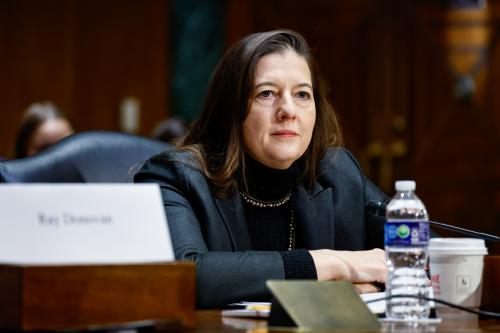This September, a UNICEF study found that for the first time in recorded history, obese children outnumber malnourished or underweight children globally. Yet in the same year, Sudan, Gaza, Haiti, and Mali faced famine and catastrophic hunger conditions. That these two sobering facts coexist reveals the fragility of our global food landscape as we mark World Food Day 2025 on October 16.
Today, the world produces an abundance of food, and 188 million people between the ages of five and 19 are obese, while nearly 300 million people across 50 countries face acute food insecurity—the sixth consecutive year of increase. So, we must ask ourselves: What causes this divide?
The geography of food insecurity no longer follows neat divisions between “poor” and “rich” countries. Conflicts in Sudan, Nigeria, and Myanmar; droughts in Africa; and floods in Pakistan and Bangladesh have destroyed crops and displaced millions. Meanwhile, inflation and currency crises have made basic foods unaffordable for low-income families even in middle- and high-income countries.
This World Food Day, we must unpack the global food story: How have food systems contributed to the rise in childhood obesity? And can humanitarian food aid systems respond effectively to multiple conflicts, climate crises, economic shocks, and displacements?
Food access in increasingly uneven across the globe
Since 2000, underweight prevalence in children has decreased from 13% to 9%, while obesity rates increased from 3% to 9.4%. Even though 37 million children between six and 59 months old suffered from acute malnutrition in 2024, the number of obese children surpassed underweight children in all regions except sub-Saharan Africa and South Asia.
Obesity is not just a developed-world problem anymore—low- and middle-income countries have seen a rapid rise in the number of overweight children in recent decades too. However, the contexts in these two settings can be different. In high-income countries, poorer households trapped in food deserts suffer from obesity, while in middle- and low-income countries, middle-class or wealthy children in urban settings are more likely to be obese.
Global food production is rapidly increasing, yet access to it is increasingly and drastically uneven—shaped by conflicts, climate shocks, economic strain, and the fragility of the global aid system. Emergency food aid response increasingly defines the present and future of our global food systems as we enter an era of both conflict-driven crises that erupt suddenly and climate disasters that emerge over decades. As these parallel crises intensify, the humanitarian architecture built for disasters risks collapsing under the weight of constant need. For example, in early 2025, the global food aid system suffered a massive fiscal shock as the U.S. cut billions of dollars in humanitarian aid, exposing how fragile and reliant the food aid system is on a handful of donor countries.
The dual burden of obesity and malnutrition manifests itself differently across income levels. In high-income countries, being overweight is more prevalent among children in low-income households who eat calorie-dense yet nutrient-poor diets. In low-income countries, on the other hand, children from wealthier families that can afford calorie-dense junk foods are more likely to be obese. In both settings, there is a common characteristic at play: the ease of availability of cheap, ultra-processed foods (industrially formulated products high in added sugars, refined starches, salt, and unhealthy fats).
Redefining food security as old notions become obsolete
The traditional narrative that children in the developed world are well-fed and those in developing countries are hungry no longer holds. This shift warrants a redefinition of what it means to be well-fed or food-secure.
Ultra-processed food has become the cheapest, most accessible option across countries. Low-income neighborhoods in rich countries are saturated with fast food outlets while fresh produce remains expensive and distant. Similarly, in lower-income countries’ urban centers, ultra-processed snacks and sugary drinks are cheap and accessible. Yet placing the onus of ultra-processed food consumption entirely on consumers ignores a fundamental reality: Corporations spend billions of dollars on marketing campaigns and lobbying efforts to shape food environments and the regulations meant to safeguard public health.
This new dynamic creates uncomfortable questions: In contexts where calories are not scarce, what does “food insecurity” mean? Can a child with access to abundant processed food but no fresh vegetables be considered food-secure? And what does it reveal about our global food systems when malnutrition is now characterized by both hunger and overconsumption?
Conflict, climate, and collapse are drivers of food insecurity
In 2024, conflict was the primary cause of food insecurity in 20 of the 50 most affected countries, impacting nearly 140 million people. In many of these cases, farmlands and markets were destroyed while access to humanitarian food aid was blocked.
Climate change is compounding these shocks: Droughts, floods, and heatwaves have destroyed crops and displaced millions across Africa, Asia, and the Middle East. Meanwhile, the COVID-19 pandemic and the Russia-Ukraine war’s impact on global supply chains led to unprecedented levels of inflation in food prices, while wages have not kept up. The persistent inflation documented in 2025 Global Report on Food Crises report confirms that healthy diets are increasingly unaffordable for millions, even in countries with well-functioning markets and fully stocked grocery stores.
Collectively, these crises reveal different but interrelated phenomenon—one of which is linked to the unraveling of humanitarian commitments in responding to protracted conflict and climate impacts. The other is linked to governments’ failure to protect their citizens from predatory food environments and systems. This World Food Day, the question is not whether these crises are connected, but whether governments are equipped and willing to address either when both have become permanent features of the global landscape.
Shared responsibility in confronting food crises
The imbalance in how we respond to food crises across the world demands us to reflect in creative ways and fundamentally rethink fiscal architecture and shared responsibility. The hunger crisis reveals the fragility of a system dependent on the voluntary commitments of a few wealthy governments. The obesity crisis exposes a different failure: Governments abdicating responsibility to regulate markets in the public interest.
Both crises persist because the systems to address them—voluntary humanitarian food aid for malnutrition and hunger, regulated markets for obesity—are fundamentally inadequate to the scale and permanence of the challenge. On this World Food Day, we should reflect on and confront uncomfortable truths about power, responsibility, and political will.
Breaking these cycles requires more than technical solutions. It demands a fundamental rethinking of responsibility. Should predictable access to nutritious food be treated as a public good, financed through more stable mechanisms than annual humanitarian appeals? Should funding to multilateral institutions be expanded to build resilience rather than merely respond to crises? Can governments act preemptively to regulate food environments as aggressively as they regulate other risks to public health?
Tools and systems around adaptive social protection exist. Better regulations of marketing restrictions and food labeling have been effective in various other geographical contexts where there is will to implement them. What remains uncertain is whether governments, multilaterals, philanthropy, and the private sector are willing to accept their shared responsibility in congruence with their roles. Until there is willingness to confront the dual challenges of shock-driven malnutrition and ultra-processed-food-driven obesity, these patterns will repeat and intensify, negatively impacting present and future generations.
The Brookings Institution is committed to quality, independence, and impact.
We are supported by a diverse array of funders. In line with our values and policies, each Brookings publication represents the sole views of its author(s).




Commentary
Rethinking responsibility in global food systems as hunger and obesity rise
October 15, 2025